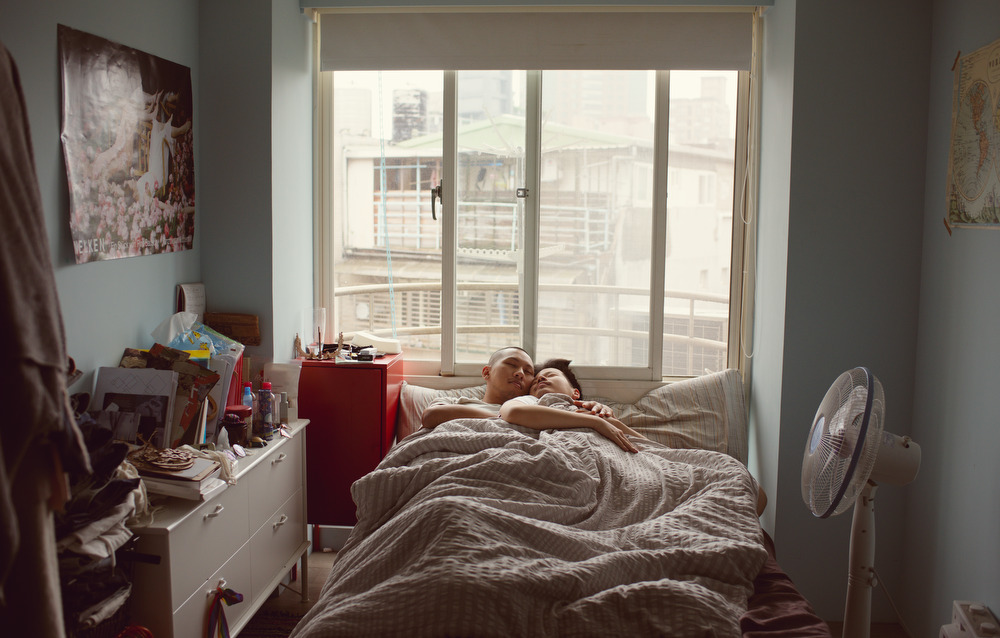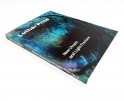Su Cassiano: A Brighter Summer Day
Projects featured this week were selected from our most recent call-for-submissions. I was able to interview each of these individuals to gain further insight into the bodies of work they shared. Today, we are looking at the series A Brighter Summer Day by Su Cassiano.
Su Cassiano is a self taught visual story teller who grew up in the suburbs of Paris, France. After completing a masters degree in Modern Literature and a degree in cinematographic studies in Paris, she worked as a movie critic specializing in independent Asian cinema, which developed her keen interest for moving images and photography. Cassiano was fueled by Hou Hsiao Hsien and Wong Kar Wai’s aesthetics, as well as contemporaries Raphaela Rosella and Maika Elan, to name just a few. She then lived in Cambodia where she started to work on a visual diary documenting daily life before moving back to Europe to develop a photographic project documenting women’s issues and marginalized bodies in underground scenes. She has been working between Europe and the Asia Pacific region since then.
Working with diverse forms of narrative portrait, her work is characterized by an intimate relationship to her subject, straddling an often blurred line between personal diary, documentary, and performance. Often portraying people in their private space, she collaborates with them over several years, going back to visit whenever possible. She employs an array of mediums, including video, sound, text and letters to gather different perspectives on each narrative. Her work questions notions of identity, representation, power dynamics and gender. Attracted to society’s fringes, Cassiano deconstructs established norms by bringing more visibility and giving voice to less represented communities.
Her work has been exhibited internationally, including in Sydney (Head On, 2019), London (Palm Photo Prize, 2018) Melbourne (Brunswick Street Gallery, 2018), Perth (PCP Iris Award, 2017 and 2018), and Tokyo (Slideluck, 2016)
Cassiano lives and works between Paris and Sydney.
A Brighter Summer Day
A Brighter Summer Day tells intimate stories from the LGBTQIA+ community in Taiwan in the period leading to the legalization of same sex marriage and the aftermath.
In 2017, the Taiwanese government declared unconstitutional to exclude same sex couples from marriage, giving Taiwan two years to vote for the bill and tearing the country apart.
7 millions people voted against.
On the 17th of May 2019, same sex marriage was legalized, Taiwan becoming the first country in Asia to do so. Nevertheless there is still no equality regarding adoption or marrying a foreign person just to name a couple issues that remain.
Stigma and stereotypes are still attached to same sex relationships in Taiwan, and more so regarding gender issues. Gender diverse people’s existence is often hidden. Gender binaries are strongly enforced in the Taiwanese culture, and people who exist outside of this binary system are rejected or made invisible. Even within the queer scene, stereotypical representations of masculinity and femininity are prevalent.
A Brighter Summer Day aims to break the stereotypical representations of the community by celebrating its diversity.
Daniel George: What took you to Taiwan and motivated you to begin photographing its LGBTQIA+ community?
Su Cassiano: I was attracted by Taiwan for a very long time so when I read in early 2019 that the country was about to vote to eventually legalize same sex marriage, making Taiwan the first country in Asia to do so, I jumped on a plane. That was historic and I wanted to be there to document that. I first wanted to show the diversity of the LGBTQIA+ community and travelled around the country to go photograph gay pride in small towns, but I quickly realized that I would rather show the intimate side of the community, not the more glittery side of the pride that is just one aspect that media tend to focus on. I wanted to show love through quiet moments, the beauty and the banality of it. I had this goal of exhibiting these images in Taiwan for the community, but also for the people who voted against to see. I hope an exhibition will happen after the pandemic.
DG: How would you say that your background in literature and cinematography informed your approach to these narrative portraits?
SC: My background in literature and cinematography are the foundations of my artistic culture, so it’s hard to dissociate that from my photographic practice. My background in literature, especially in the romantic era of poetry in France in the 19th century or the decadent poets build some of my early inner worlds and shaped my taste. The link to cinema is more obvious, as I used to be a movie critic specialized in Asian films, and later on worked in an underground movie store in Paris. I first discovered Taiwan on a screen, fueled with Tsai Ming Liang, Hou Hsiao Hsien or Edward Yang movies, and I fell in love. French cinema tends to be very talkative, which is not what I look for in a movie. I love slow cinema that enables me to lose myself in a frame, a story, an atmosphere. Since this project I actually switched from digital to medium format film camera as I want to work slower. Photography teaches me patience.
Taiwan and especially Taipei was its own character in my imagination, and when I arrived there it was already so familiar because of the movies I have watched. I wanted to render the cinematic aspect of the town in my photos. As a self taught photographer I have learned photography through cinema, by watching films I learned how to frame, how to look at the quality of light. My dream was to be a film director. Artists like Raymond Depardon and Agnes Varda are some of the best inspirations for me. Their work is ethical, engaged and show the ordinary in a poetic way. They’re both photographers and directors, but first of all they’re story tellers. I was lucky enough to meet them both and they were as beautiful people as their work.
DG: While clearly focusing on people, your visual approach gives consideration to place, as well. Could you talk more about the environments that your subjects occupy?
SC: My approach is very instinctive and quite loose, as I tend to work with my gut feeling and adapt to the people I portray. I like to portray people in their environment. Especially being in Taiwan, a city that I felt a connection with just by watching Taiwanese movies. Taipei is such a cinegenic city. Riding on a motorbike I would sometimes recall some scenes from Millenium Mambo. The buildings and their rooftops create this particular atmosphere. I wanted to use that as a background to the story. The city is another character. People are a product of their environment. Their personalities and behavior resonate with the city’s identity. I like to use the specificity of a place to inform about a person’s context. I work quite spontaneously and I’m ready to adapt to what people want, so we usually meet at their place, or at a place of their choice. So it’s always a surprise for me, as I’m dragged into someone else’s world, but that’s an aspect that I love. And the space, inside or outdoor, really plays a part in placing someone within a time, a culture and an idea.
DG: You write that your aim is to break stereotypical representations of the community, as Taiwanese culture strongly enforces gender binaries and rejects those who exist outside of the prescribed system. In what ways do your images accomplish this?
SC: I don’t know if I’ve succeeded! I feel like I’ve barely scratched the surface. To simplify in Taiwan women need to be cute and men need to have a muscly body to be worthy of romantic love, and even within the queer scene these stereotypes are prevalent, or replaced by queer stereotypes. It’s something that we talked a lot about with the people I have photographed. These models come from a succession of colonial influences, mainly American and Japanese. My approach is to connect to people and collaborate, leaving space for them to tell their story. People need to be seen and heard in order to live a fulfilled existence, so I try to give that safe space of expression. A lot of the time queer people are portrayed in a stereotypical way, especially in a place like Taiwan where gender roles are very enforced, even in same sex couples. Showing strong men posing in their bedroom with their cute dogs, proud of their collection of stuffed animals was a way of going around that idea, by also showing the particularity of Taiwan. I like to play with gender codex and portray strong women and soft men.
I leave space open for people to put themselves in the process, if they want to. I’m not super interested in the facade, I’m interested in the ‘off’ moment. I wanted to show the quietness of the ordinary life and its beauty. Once the pandemic is over and we can travel again, I want to go back to Taiwan to continue following some of the people in the project. The first step of the process was horizontal, trying to show the diversity of LGBTQIA+, I would like to work vertically now, focusing on a few persons only and show how they live.
DG: Along with your photographs, the title of the project suggests your desire to bring visibility to those estranged from Taiwanese culture—through reverential, thoughtful treatment. In general, and again considering your background, how do you feel the photographic medium is most appropriate to shed light on this topic?
SC: A lot of the titles I use are referential, and A Brighter Summer Day is the title of a movie by Taiwanese director Edward Yang whose work has a very special resonance to me. Even though the topic of his film is completely different, the title felt relevant as the legalization of same sex marriage felt like a ray of light, an openness into a new era, a potential for something better for Taiwan and beyond.
Photography is just a tool for connection. I also interview people and ask them to write letters. I sometimes do videos, which is a practice I want to include more in my work. But photography goes beyond language barrier. I believe it can convey ideas and emotions directly to our hearts. I want to speak to people’s hearts and make them react, or feel connected, or maybe change their mind about a subject. It’s going to sound cheesy, but my approach is one of love and vulnerability, of softness and quietness.
Posts on Lenscratch may not be reproduced without the permission of the Lenscratch staff and the photographer.
Recommended
-
Earth Month Photographers on Photographers: Tyler Green in Conversation with Megan JacobsApril 15th, 2024
-
Luther Price: New Utopia and Light Fracture Presented by VSW PressApril 7th, 2024
-
Emilio Rojas: On Gloria Anzaldúa’s Borderlands: The New MestizaMarch 30th, 2024
-
Artists of Türkiye: Cansu YildiranMarch 29th, 2024
-
Artists of Türkiye: Sirkhane DarkroomMarch 26th, 2024

















































































